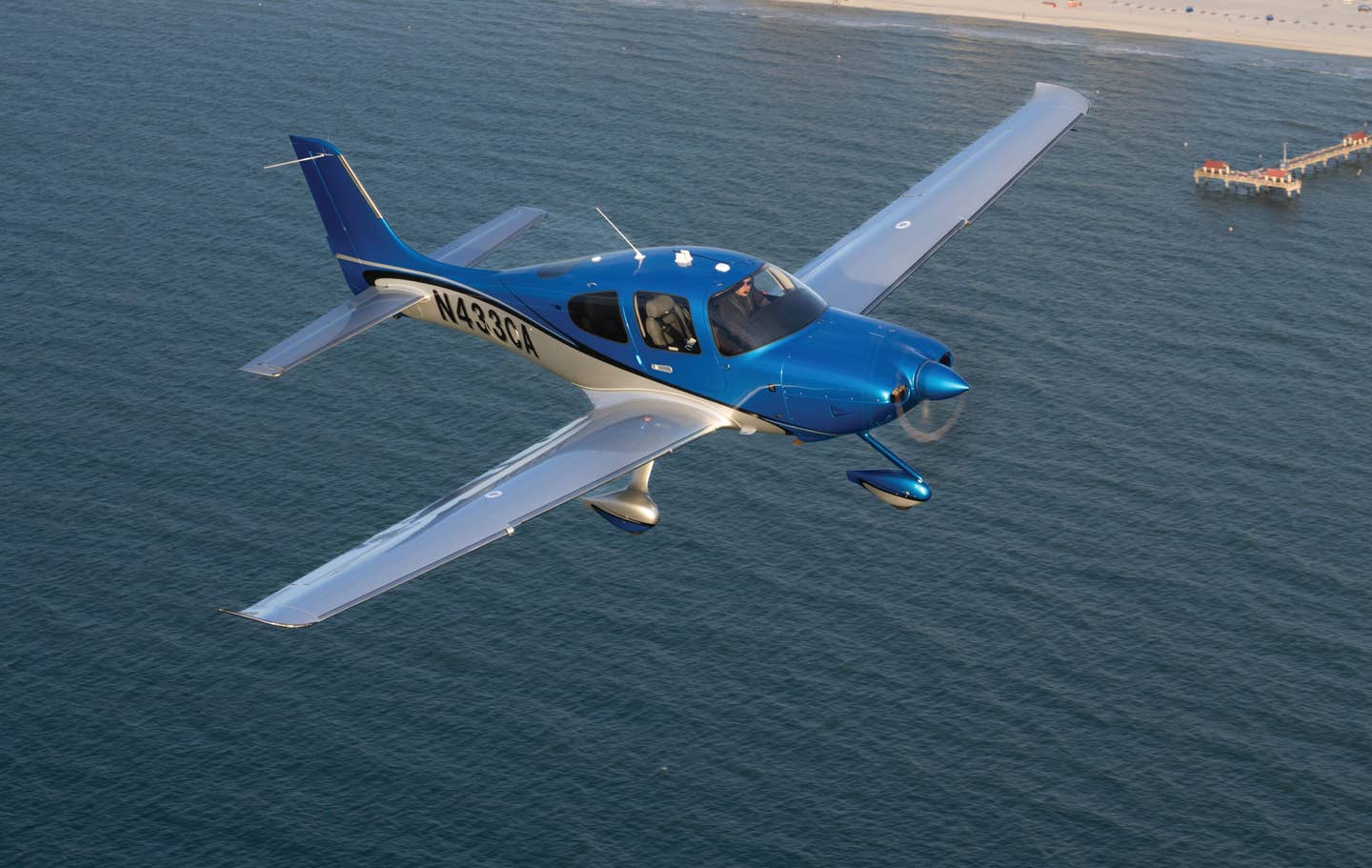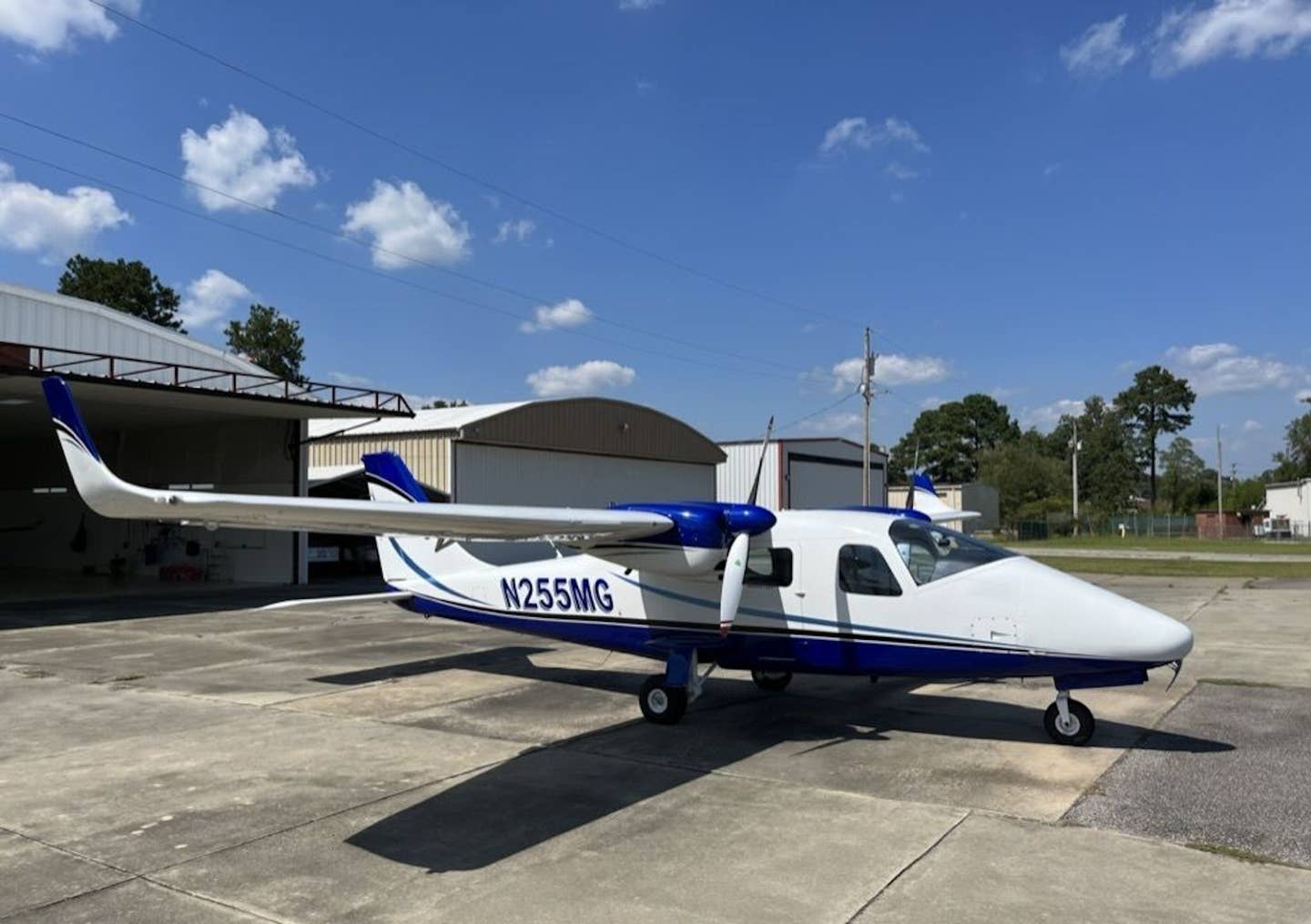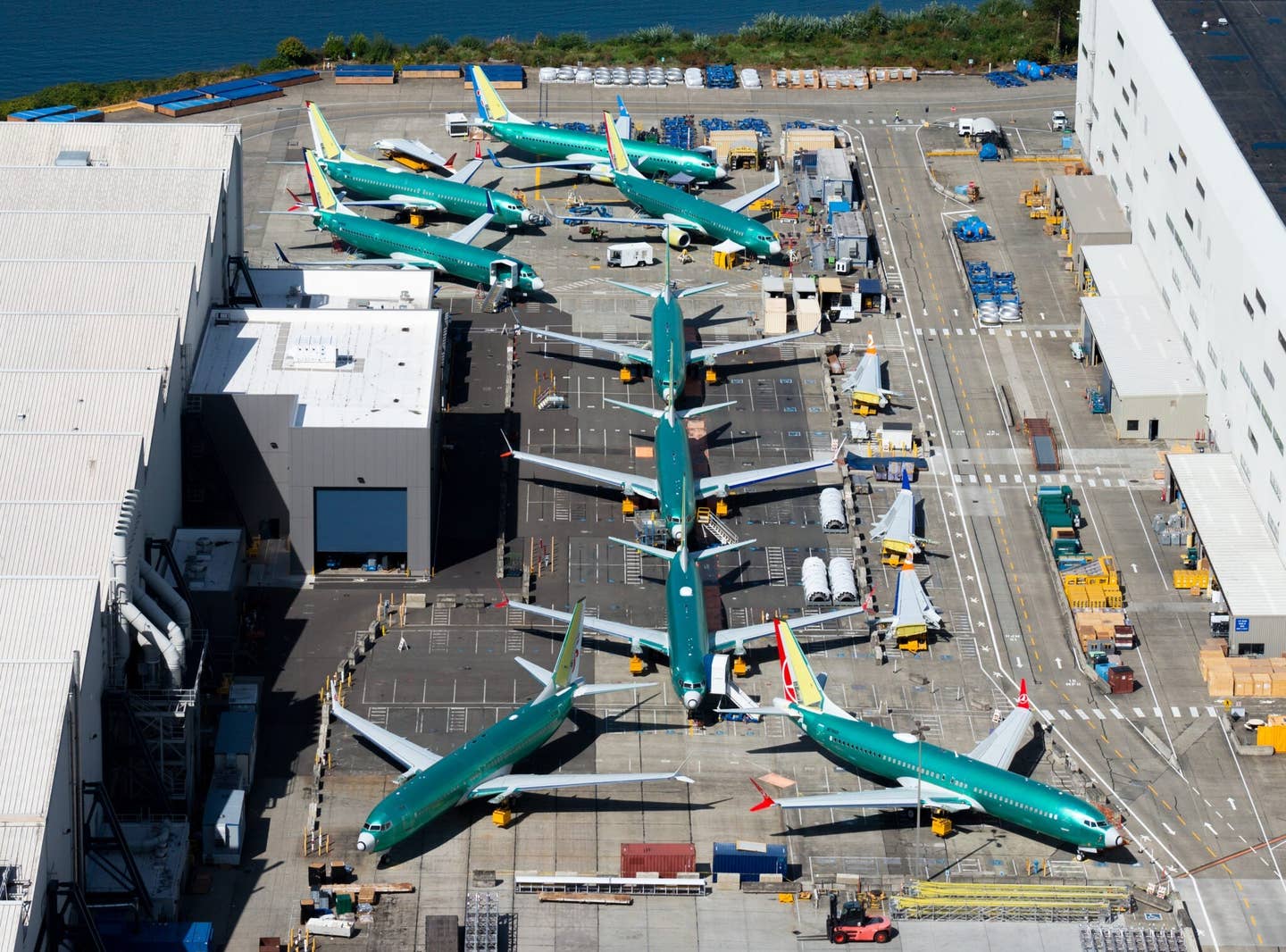
In general, the Cirrus SR22 is faster than many trainers and
a bit less forgiving than something like a Cessna 172, particularly when it comes to approach and landing speeds. [Jim Koepnick]
Congratulations! You’ve just passed your private pilot check ride. Along with being free to explore the skies, you can now—if you so choose—wave goodbye to the staid, serviceable set of wings that got you there and try something a bit better suited to whatever dream it was that had you stepping through the flight school door in the first place.
The wide world of aircraft is now open to you, but what can you actually fly? Part of being a good pilot is recognizing that sometimes our eyes are bigger than our skill set. While hopping into a high-performance World War II warbird is a great goal, it is probably not the thing to do while waiting for the ink to dry on that new certificate.
If you're not already a subscriber, what are you waiting for? Subscribe today to get the issue as soon as it is released in either Print or Digital formats.
Subscribe NowThat said, there will be a learning curve with any new-to-you model—and the possibilities are nearly limitless. Here are a few options to get you started that you can either step into right away or require just a few hours of further training.
Ultra-Modern: Cirrus SR22
If what turns your head is a sophisticated aircraft with advanced avionics, comfortable cockpit, and safety features such as a whole-airframe parachute, consider the Cirrus SR22 series. It may not be an entirely new model for everyone, given that it does see use in the training environment. However, between the depth of available features and its capabilities, there’s plenty of room for even more advanced pilots to expand their skill sets to take better advantage of all the model has to offer.
The latest version of the nonturbocharged SR22, the recently unveiled G7, boasts a top cruise speed of 181 knots, 1,169 nm range, and useful load of 1,326 pounds. Capable of seating up to five, it comes equipped with the G3000-esque Perspective Touch+ by Garmin avionics suite and offers an array of advanced features, including crew alerting system (CAS) linked checklists and taxiway routing. The SR22 is also a capable IFR machine, so becoming familiar with the model could be a particularly good option if you’re looking toward your next rating.
- READ MORE: This 2017 Cirrus SR22T Is a High-Performance, Parachute-Protected ‘AircraftForSale’ Top Pick
Keep in mind that there can be a lot of variation within a model type. If you’ve flown an early generation SR22 in training, you could find yourself in for a few surprises when you get into the cockpit of a newer version like the G7—or vice versa. This holds true for any model that has seen updates over multiple production cycles, so check that you are familiar with the specific configuration of the version you’re getting ready to fly well before takeoff.
In general, the SR22 is faster than many trainers and a bit less forgiving than something like a Cessna 172, particularly when it comes to approach and landing speeds. If you’re stepping up from a slower airplane, beware of falling behind the aircraft.
To act as PIC, you will need a high-performance endorsement: typically five to 10 hours of additional training with the instructor signing you off once they feel you are competent. Insurance requirements will likely dictate the final amount.
As a side note, if you’re going all-in and buying a used Cirrus rather than renting, the company offers up to three days of instruction with one of its authorized training partners free of charge via the Cirrus Embark program. Free transition training with the experts is hard to come by and extraordinarily valuable, so don’t miss out.
Vintage: Piper J-3 Cub
Is there anything more iconic in general aviation than a little yellow Piper J-3 Cub? If you’re looking to get places quickly, overcoming all inclement weather, and staying aloft for as long as biology allows, move along. This isn’t the one for you.
But if what you want is a nostalgic meander through beautiful VFR days, honing your stick-and-rudder skills while feeling the wind in your hair, the Cub can be a great model to turn to. Introduced in 1937, the two-seat J-3 is among the most recognizable models around with nearly 20,000 produced and a stock paint job so identifiable that the color came to be called “Cub Yellow.”
Turning to the practicalities, if you don’t already have one, you will need a tailwheel endorsement to fly a J-3. It takes a rough average of 10 hours to complete but will put an array of interesting aircraft within your scope. Be warned: It will not be like flying a tricycle-gear trainer. Tailwheel aircraft have their own traps waiting for the unwary pilot—a much stronger predilection for ground loops, for example—so find a good instructor and pay close attention to the differences in handling characteristics. That said, with solid instruction flying a Cub is well within reach for a newer private pilot.
Pay attention to loading once you’re cleared to go up on your own. The Cub is little and light—two good-sized people can overload it, and it’s just not built for carrying much cargo. The stock 1947 version is powered by a 65 hp Continental engine (the earliest model had just 40 hp), offering a cruise speed of around 65 knots, 191 nm range, and useful load of 455 pounds.
To be fair, the J-3 is also not going to win any awards for cabin comfort. What it has, though, is style and history. The Cub is also a reasonable place to start if you’re looking to fly more complicated vintage aircraft in the future.
Solid Performance: Cessna 172 Skyhawk
Sometimes it just isn’t worth messing with a good thing. The Cessna 172 Skyhawk is a reliable, stable performer with a long history of taking pilots where they need to go. It is easy to fly, easy to land, and capable of a little bit of everything. That’s why it remains such a popular all-around trainer.
Alongside its general cabin comfort, those same characteristics make it a great option for new private pilots. In addition to being familiar to many, it requires no further endorsements or ratings and keeps to speeds common to other ab initio training aircraft—meaning timing in the cockpit will likely be similar even if you learned in something else. Furthermore, if you’re going to be renting, they’re easy to find pretty much anywhere.
Like many of the other aircraft discussed, there is a lot of variation in 172 models even when only considering stock versions. Get to know the specific model you’ll be flying. Among other examples—and it probably goes without saying at this point—if you trained on one type of avionics (i.e. glass vs. analog gauges or Garmin flight deck vs. Avidyne), plopping yourself down in front of another without someone to teach you best practices and pitfalls is, quite frankly, a terrible idea. If what’s available to you is different in any significant way than what you trained on, grab a qualified instructor and log some learning time before heading out on your own.
The latest Skyhawk model has a top cruise speed of 124 knots, range of 640 nm, and useful load of 878 pounds. It comes equipped with Garmin G1000 NXi avionics and can seat the pilot plus three passengers. While it may seem too plain for some—it isn’t the fastest, leggiest, or tech-iest for sure—there’s no reason not to love a jack-of-all trades aircraft like the 172.
On the Water: ICON A5
If you are looking to head toward the water with your new certificate, it is worth taking a look at the ICON A5 amphibious light sport aircraft (LSA). Designed with recreational aviation in mind, it aims to provide a simple, fun flying experience even for pilots new to seaplanes. It comes with many safety features, including a whole-airframe parachute.
As of December when the FAA granted it type certification in the primary category, the two-seat ICON A5 is available in certified and special light sport aircraft (S-LSA) versions. Both have a top speed of 95 knots, a 427 nm range, and a useful load of 430 pounds. Certified and S-LSA A5s are powered by the fuel-injected Rotax 912iS engine and come equipped with the Garmin aera 796.
When acting as PIC, the primary difference between the two versions is what you are required to have to fly one. To operate the certified edition in the U.S., you will need a private pilot certificate and seaplane rating. However, the S-LSA model, which ICON began delivering to customers in 2017, will continue to require a sport pilot certificate with a seaplane endorsement. Make sure you know what you need to legally fly the model in front of you.
If a seaplane rating or endorsement is all that stands in your way, the time frame for getting one tends to be about the same as the tailwheel endorsement: typically five to 10 hours of dedicated instruction, with the bar being when the instructor feels you are demonstrating proficiency.
Like most seaplane models, it can be quite difficult to find an A5 to rent. However, if you’re in the market for your own aircraft or one is available to you, it makes for a good launch into the world of amphibious aircraft.
Jet-A Traveler: Diamond DA40 NG
The four-seat Diamond DA40 NG has made a name for itself as a sleek, efficient, and easy-to-fly option for everyone from students to experienced IFR pilots. Its Austro AE 300 engine burns jet-A, making it a great entry-level choice for pilots looking to fly cross-country and/or in areas where avgas isn’t readily available. It is worth noting that the NG’s counterpart, the avgas-burning DA40 XLT, is a significantly different airplane, though worthy of consideration in its own right.
Along with offering great visibility through the bubble canopy, the DA40 NG is a comfortable cross-country machine with good range and reasonable speed for its type. As with the 172, no additional ratings or endorsements are needed to fly one. Once introductory flights are complete and you are comfortable with the aircraft, you’re good to go.
The newest version of the DA40 NG sports a top cruise speed of 154 knots, 934 nm range, and useful load of 897 pounds. Notably, its fuel consumption comes in at just 5.1 gallons per hour. On the avionics side, it is equipped with the Garmin G1000 NXi flight deck.
In addition to its range, the fuel burn in particular makes the DA40 NG an attractive choice for a new private pilot looking to go places. It can travel a long way on much less than many of its competitors. Another point in the model’s favor is the cockpit noise…or lack thereof. The diesel engine runs on the quieter side.
The DA40 NG is a well-behaved flyer, so transitioning to one shouldn’t be too complicated for most—assuming you didn’t learn to fly in one in the first place.
Fair Winds, Clear Skies
There are a nearly endless number of aircraft models out there, with pathways available straight to the left seats of a great many. While it may take step-ups, additional ratings, or endorsements, make a plan, get the training, and go for your dream airplane.
Who knows? You may even fall in love with a few others along the way.
This feature first appeared in the March 2024/Issue 946 of FLYING’s print edition.

Subscribe to Our Newsletter
Get the latest FLYING stories delivered directly to your inbox







